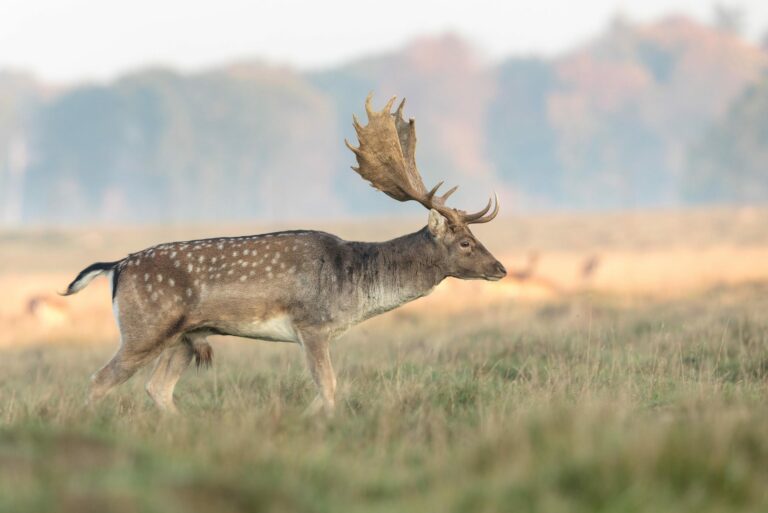Dama dama

Fallow deer were already widespread in Europe before the Ice Age and found their refuge in Anatolia. Numerous translocations occurred, including those by the Romans and later through settlements as fallow deer game reserves. Forests with sufficient adjacent fields and meadows are the habitat for the social-living fallow deer. The weight of strong stags can reach up to 120 kg with a head-to-body length of up to 175 cm. The shoulder height of male animals ranges from 70 cm to 100 cm (Nüsslein 1990). The fur is reddish to brown with white spots, and there is a black stripe on the tail. Male deer develop antlers, which are shed and then regrown annually in March/April. Dama dama are active both during the day and night. The mating season begins in October. Usually, only one calf is born, but twin births occur more frequently than in red deer (Nüsslein 1990).
Diet: The diet of fallow deer consists mainly of grass, herbs, nuts, and fruits, as well as browsing on bark and other plant components (Southern 1965).
Threat status: The fallow deer is listed as “least concern” in the IUCN Red List of Threatened Species.
-
Schaefer, M (2018)Brohmer – Fauna von Deutschland. Ein Bestimmungsbuch unserer heimischen Tierwelt: Quelle & Meyer Verlag GmbH & Co.
-
Southern, H (1965)Handbook of British mammals. Mammal society of the British isles. Unter Mitarbeit von Robert Gillmor und Erik Thorn: Blackwell Scientific Publications Oxford.